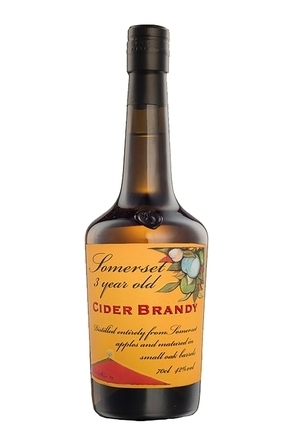Are you a Discerning Drinker?
Join thousands of like-minded professionals and cocktail enthusiasts, receive our weekly newsletters and see pages produced by our community for fellow Discerning Drinkers.
On 13th September 2011, a vote by the EU's Spirit Drinks Committee confirmed that Somerset Cider Brandy could join products such as Melton Mowbray Pork Pies, Dorset Blue Cheese, Whitstable oysters and Arbroath Smokies when it was granted Protected Geographical Indication (PGI) status by the European Union.
According to the PGI definition, Somerset Cider Brandy must be:
- Made within the county of Somerset, England.
- Made using apples grown in Somerset and all production processes such as pressing, fermentation, distillation and maturation must also occur in the county.
- From apples grown without the use of artificial nitrogen fertilisers.
- made using apples from orchards producing no more than 10 tonnes per acre.
- Made from one or a blend of 40 specified varieties of apples and a minimum of 20 varieties must be blended for each batch. (Harry Masters Jerseys, Stoke Reds and Brown Snouts are all varieties commonly used).
- Made using apples harvested in the Autumn and pressed before the end of December. (There are no rigid rules as to the type of press used.)
- Made without the use of additives, colouring or sweetening.
- Aged in casks not exceeding 500 litres - any sort of oak can be used, new or old.
- Aged a minimum of three years aging to be called 'Brandy'.
- From a final distillate between 68% and 72% abv.
The PGI definition allows:
- Fermentation to be conducted in oak vats, stainless steel or glass fibre fermentation vessels.
- Both naturally occurring and proprietary strains of yeast are allowed.
- Distillation can use continuous or pot stills.
Interestingly, only distillers in Somerset who abide by the terms of the PGI are allowed to use the word 'brandy' to label their apple brandy. Others, including Calvados, have to describe their product as 'Cider Spirit'.

Somerset Twenty Year Old (XX) Cider Brandy
Category: Spirits
Sub category: Brandy (eaux-de-vie, cognac, armagnac, rakia etc.)
alc./vol: 42

Somerset Ten Year Old Cider Brandy
Category: Spirits
Sub category: Brandy (eaux-de-vie, cognac, armagnac, rakia etc.)
alc./vol: 42

Somerset Royal 3 Year Old Cider Brandy
Category: Spirits
Sub category: Brandy (eaux-de-vie, cognac, armagnac, rakia etc.)
alc./vol: 42

Somerset Five Year Old Cider Brandy
Category: Spirits
Sub category: Brandy (eaux-de-vie, cognac, armagnac, rakia etc.)
alc./vol: 42




